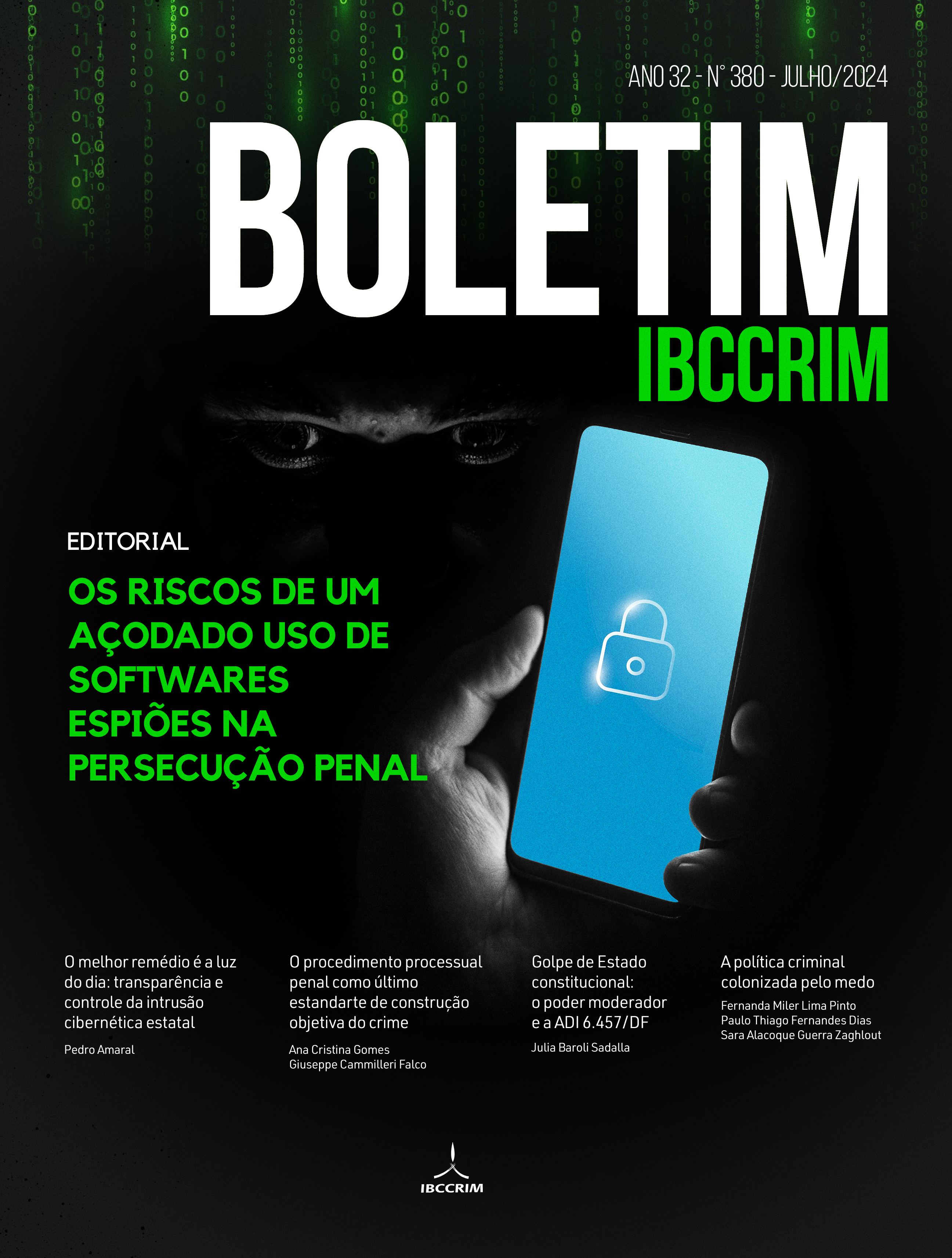The best medicine is daylight:
transparency and control state cyber intrusion
Views: 284DOI:
https://doi.org/10.5281/zenodo.12207947Keywords:
surveillance, cyber intrusion, government hacking, ADPF 1143, transparencyAbstract
This article discusses state cyber intrusion capabilities, their risks and abuses in Brazil and worldwide, as well as the need to expand transparency and control mechanisms for these capabilities, bearing in mind Fundamental Precept Noncompliance Claim 1143, which is before the Brazilian Supreme Court and aims to address remote monitoring tools and spyware. The starting point is the recognition that the Internet has been designed to enable surveillance for commercial purposes and that these capabilities tend to be pursued or sold to security agencies.
Downloads
Publication Facts
Reviewer profiles N/A
Author statements
- Academic society
- Instituto Brasileiro de Ciências Criminais
- Publisher
- IBCCRIM
References
CLEMENT, Andrew. Limits to Secrecy: What Are the Communications Security Establishment’s Capabilities for Intercepting Canadians’ Internet Communications? In: LYON, David; WOOD, David Murakami (Ed.). Big data surveillance and security intelligence: The Canadian case. UBC Press, 2021.
EASTERLING, Keller. Extrastatecraft: The power of infrastructure space. Verso Books, 2014.
JARVIS, Craig. Crypto wars: the fight for privacy in the digital age: A political history of digital encryption. CRC Press, 2020.
KOEPKE, Logan et. al. Mass Extraction The Widespread Power of U.S. Law Enforcement to Search Mobile Phones. Upturn, 2020. Disponível em https://www.upturn.org/work/mass-extraction/. Acesso em 22 de maio de 2023.
RAMIRO, André (coord.); AMARAL, Pedro; CANTO, Mariana & PEREIRA, Marcos César M. Mercadores da insegurança: conjuntura e riscos do hacking governamental no Brasil. IP.rec, 2023. Disponível em: https://ip.rec.br/wp-content/uploads/2022/11/Mercadores-da-inseguranca.pdf.
TARNOFF, Ben. Internet for the people: The fight for our digital future. Verso Books, 2022.
Downloads
Published
How to Cite
Issue
Section
License
Copyright of published articles belongs to the author, but with journal rights over the first publication and respecting the one-year exclusivity period. Authors may only use the same results in other publications by clearly indicating this journal as the medium of the original publication. If there is no such indication, it will be considered a situation of self-plagiarism.
Therefore, the reproduction, total or partial, of the articles published here is subject to the express mention of the origin of its publication in this journal, citing the volume and number of this publication. For legal purposes, the source of the original publication must be consigned, in addition to the DOI link for cross-reference (if any).


 Português (Brasil)
Português (Brasil)
 English
English
 Español (España)
Español (España)






